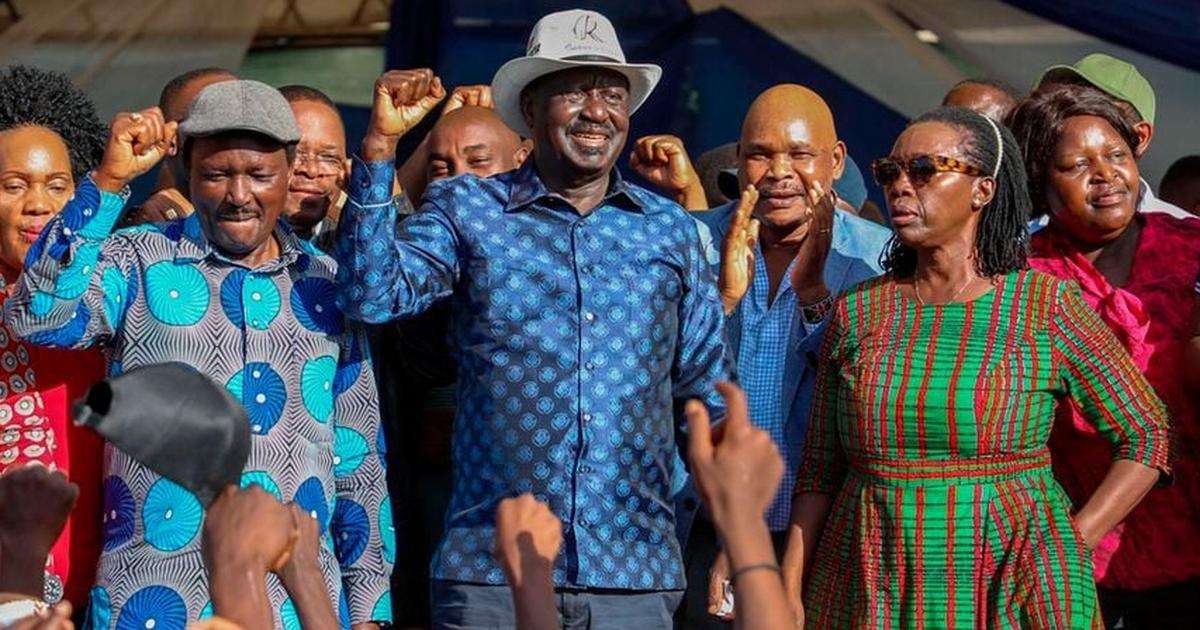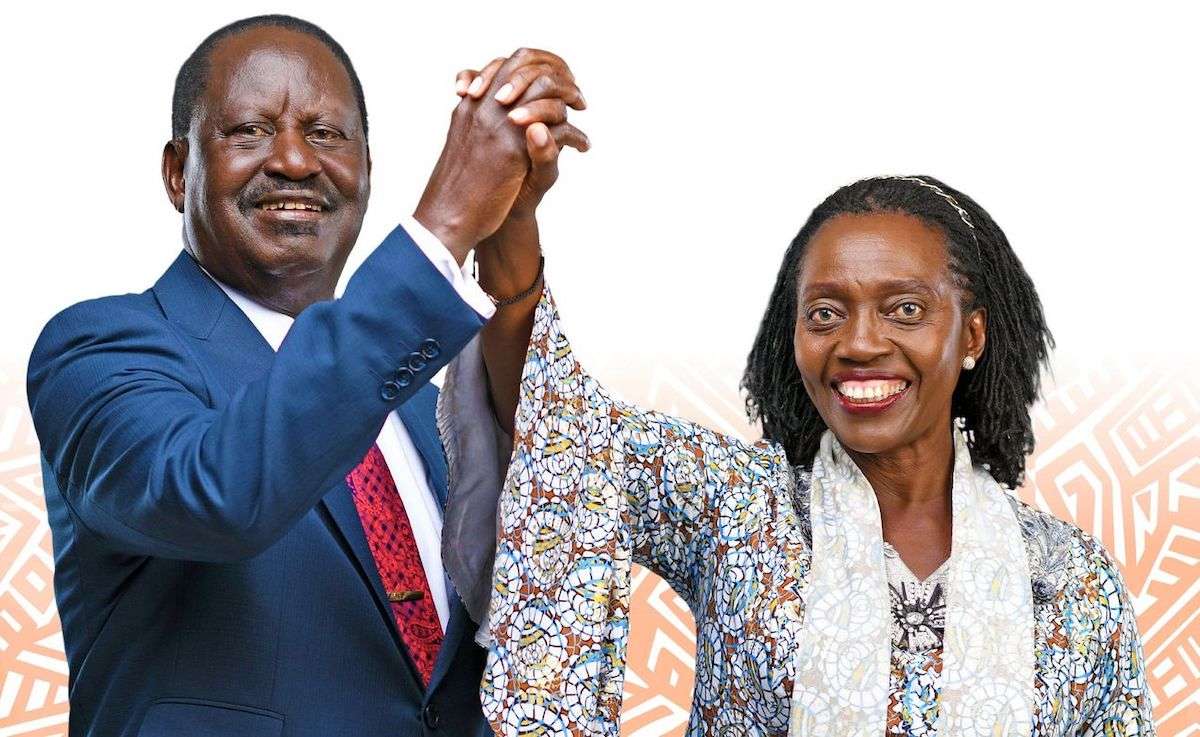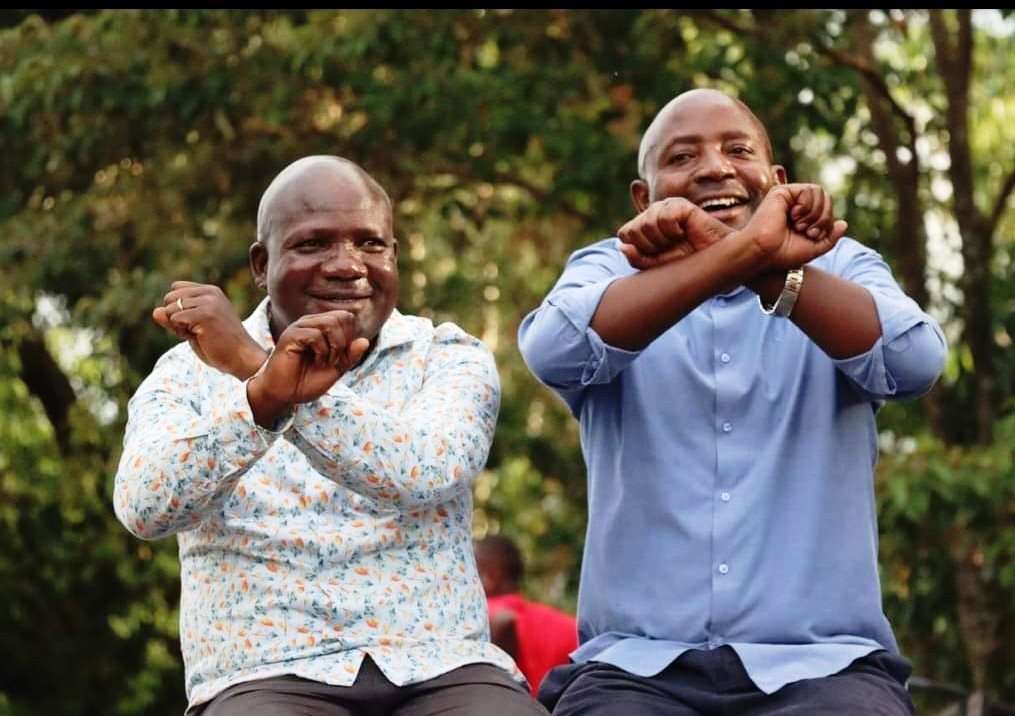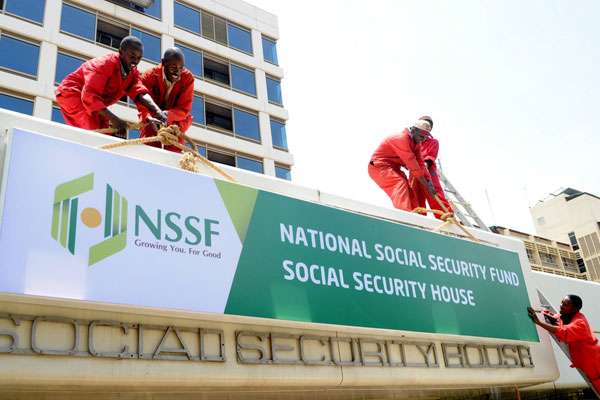By The Weekly Vision Team
Wiper Party leader Kalonzo Musyoka is once again facing a difficult situation regarding the succession politics within the Azimio One Kenya Coalition. Indications suggest that Raila Odinga’s appointment as African Union Commission Chairman is imminent, his absence from the local political scene is likely to trigger a succession debate within Azimio that is heightening political tensions as two factions vie for control.
Kalonzo Musyoka is currently striving to install himself as Raila’s successor in Azimio; however, on the other side, Martha Karua, leader of Narc-Kenya, is also actively pushing to be endorsed as Raila’s successor, citing her position as Raila’s running mate in the 2022 elections. Nevertheless, politics revolves around numbers, which puts her in a disadvantageous position due to the lack of elected leaders from her party, Narc-Kenya.
While the rivalry between Kalonzo and Karua intensifies, it has come to light that a faction of party leaders from the Mount Kenya region is uniting in support of Martha Karua. This alliance could potentially lead to Kalonzo’s exit from the coalition. Behind Karua are Mwangi wa Iria, Jubilee’s Jeremiah Kioni, Peter Munya, Nderitu Mureithi, and DAP-K’s Eugene Wamalwa. It is imperative to note that leaders pushing for Karua are all opposed to the National Dialogue Committee report, which Kalonzo and Raila have endorsed.
At stake is who will fly the Azimio presidential flag in 2027 and who will be the official leader of the opposition should the NADCO report be adopted and implemented. According to the report, there will be an official opposition leader and two deputies. According to the report, the official opposition leader shall be the leader of a party with a majority of elective seats in the last general elections. What that means, therefore, is that whoever becomes the ODM leader will automatically be the leader of the opposition.
However, ODM can work on a gentleman’s agreement to allow Kalonzo to take up the role, with ODM producing one of the deputies and perhaps Karua taking over as another deputy. Analysts, however, reveal that Karua has never supported the NADCO report and might find it difficult to be a beneficiary of a report she had publicly opposed. On the same note, it also locks out Wamalwa, who is also opposed to the report.
What if ODM insists on taking up the official opposition seat? Will Kalonzo agree to be the deputy opposition leader? This matter remains a hot potato and could break Azimio should there be no consensus.
There have been widespread speculations regarding Raila’s inclination towards Kalonzo as a potential successor to lead Azimio in the event of his success in the AUC job. However, Karua and her allies within Azimio firmly believe that Kalonzo should not be considered for this role. Consequently, there is a significant internal struggle within Azimio regarding Raila’s successor. According to analysts, Kalonzo is more likely to succeed Raila based on the statistics, a notion dismissed by allies of Karua. Many believe that Kalonzo is facing a major challenge in terms of Raila’s succession within Azimio.
There is a perception that Kalonzo is unable to match the political stature of Raila. It is argued that Kalonzo has failed to carve out his political course and has instead relied on Raila’s endorsement. Consequently, Kalonzo’s political visibility has significantly declined since Raila departed from the local political scene to pursue the AUC job. Critics of Kalonzo’s elevation within the Azimio leadership assert that he lacks the requisite resources and financial strength to mount robust presidential and political campaigns, which would effectively challenge the Kenya Kwanza administration.
It has been noted by pundits that a coalition leader must have significant financial resources to effectively fund political activities, manage logistics, and potentially cover costs for services like helicopter rentals and accommodation for other leaders. According to one source, organizing a political rally in Mombasa would require a minimum of Sh10 million. The question arises: does Kalonzo have the financial capacity for these responsibilities?
To successfully take over as Azimio leader from Raila, Kalonzo must confront the rising factions within the ODM party who are also aspiring to become the party’s next leader after Raila. As much as Raila is promising to have Wycliffe Oparanya and Hassan Joho as ODM party leaders, some camps are opposed to the two leaders, including Opiyo Wandayi and Babu Owino. Right now, Kalonzo is in a predicament as he weighs his options on which faction to engage with to secure the leadership of Azimio. If he decides to align himself with Oparanya, then he risks isolating the Joho Camp, and vice versa.
Another big dilemma for Kalonzo is the running mate equation: should he be named the Azimio leader and presidential flag bearer? Already, Kalonzo has confided in his inner circle about his inclination towards partnering with Eugene Wamalwa, the leader of DAP-K, as his running mate for the upcoming 2027 elections.
It is imperative for Kalonzo to promptly tackle the issue that, to receive ODM’s support and endorsement, he must be prepared to select a running mate from ODM. The pressing question remains: who will he choose? Analysts say that Kalonzo must pick a running mate from the Luhya nation who is allied to ODM. This automatically locks Wamalwa. Will that running mate be Oparanya or ODM Secretary General Edwin Sifuna?




